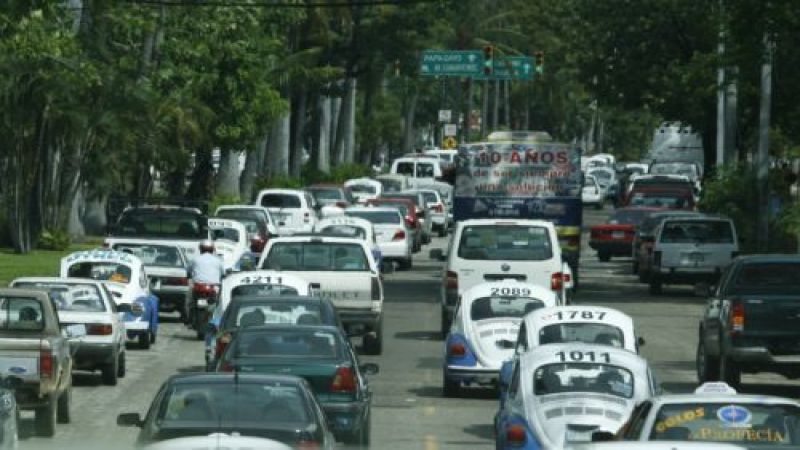The study, The Public Health Costs of Traffic Congestion: A Health Risk Assessment, was published in the scientific journal Environmental Health. It is the initial attempt to quantify the public health implications of growing traffic congestion in America.
"Our estimates of the total public health costs of traffic congestion in the U.S. are likely conservative," the study authors write. They point out their research considers "only the impacts in 83 urban areas and only the cost of related mortality and not the costs that could be associated with related morbidity, health care, insurance, accidents and other factors."
Not surprisingly, the health toll of traffic congestion was highest in the nation's largest urban areas. The Los Angeles/Long Beach/Santa Ana, California, area was first, with an estimated 426 premature deaths and $3.3 billion in public health costs. It was followed by: New York City/Newark, New Jersey (+337 premature deaths, +$2.6 billion in costs); Chicago/Northern Indiana (+251 premature deaths, $2 billion costs); and San Francisco/Oakland, California (+124 premature deaths, +$1 billion in costs).
The study projected the growth of traffic congestion and resulting emissions from a baseline in 2000 until 2030. The report assumed no alleviation of the conditions causing the congestion during the next 19 years.
However the study does expect traffic conditions to worsen as much as 30 percent by the year 2030 in the following 18 areas: Raleigh, North Carolina (54 percent); Oxnard, California (47 percent); Las Vegas, Nevada (46 percent); Salt Lake City, Utah (45 percent); Sarasota/Bradenton, Florida (45 percent); San Antonio, Texas (42 percent); Orlando, Florida (41 percent); Laredo, Texas (38 percent); Richmond, Virginia (36 percent); Phoenix/Mesa, Arizona (33 percent); Pensacola, Florida (31 percent); Riverside/San Bernardino, California (31 percent); San Diego, California (31 percent) and Spokane, Washington (30 percent).
While the study was not intended to research solutions to congestion it did suggest solutions would likely vary from community to community. Possible strategies include better traffic management through congestion pricing, traffic light synchronization, efficient response to traffic incidents and adding new capacity. More refined models of traffic dynamics specific to each urban area and considering public health study models could be used to explore the impacts of proposed strategies.
There was a little good news to report: The number of premature deaths and public health costs directly due to traffic congestion has been declining over the past 10 years and will continue to do so until 2030 when it will again begin to rise.
The reason is the average 20-year-old combustion engine produces 100 times more fine particulate matter than the average new car – not including hybrids and electric vehicles that are even less polluting, according to Tim Jackson of CADA, in reference to research performed in Boulder, Colo. last year.
Members of the study group included: Jonathan I. Levy, an associate professor at the Harvard School of Public Health during the study and currently a professor of environmental health at Boston University's School of Public Health; Jonathan Buonocore, a doctoral student in the Environmental Science & Risk Management program at the Department of Environmental Health at the Harvard School of Public Health; and Katherine von Stackelberg, HCRA research manager and a principal at E. Risk Sciences, LLP.
The report was financed by a grant underwritten by the Transportation Construction Coalition (TCC), which includes 29 national associations and labor unions with an interest in federal transportation policy. The TCC is co-chaired by the American Road & Transportation Builders Association and the Associated General Contractors of America.
The Harvard Center for Risk Analysis was founded in 1989 and is recognized as a world leader in applying decision theory, environmental health science and economics to a broad range of environmental health issues. HCRA is a research institute within the Harvard School of Public Health, with the objective of using a variety of analytic methods to inform public policy decisions relevant to public health.
Image courtesy of Joe Farace











